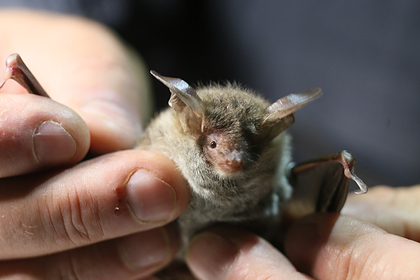New coronavirus RhGB01 was found in horseshoe bats in the UK 
mice new coronavirus RhGB01. The found virus does not yet pose a danger to humans. However, scientists emphasize that there is a risk of recombination of this and similar viruses with SARS-CoV-2, which could lead to new outbreaks of infections among people. The findings were presented in an article published in Research Square.
Although the natural source of SARS-CoV-2 is still unknown, it is believed that the precursor to the virus that caused the COVID-19 pandemic and has killed more than five million people worldwide was the sarbecovirus (a subgenus of coronaviruses) in Asian horseshoe bats or rhinolophids. The ancestor of SARS-CoV-2 could have passed from bats to an intermediate host, for example, pangolins, where the virus underwent mutations, the exchange of genetic material (recombination) with other viruses and other changes affecting the gene. Since the habitat of rhinolophids covers the whole world, there is a risk that a new SARS-like infection may occur.
Researchers have studied whether the bats of the species Rhinolophus hipposideros living in the UK, carriers of sarbekoviruses. Fecal samples were collected from 53 individuals from Somerset, Gloucestershire and Monmouthshire counties, caught in August-September 2020. Genetic material was isolated from the samples and analyzed for the presence of viral RNA. Then the reconstructed viral genomes were compared with the sequences stored in biological databases.
Scientists discovered an unknown sarbekovirus, designated by them as RhGB01 (stands for Rhinolophus hipposideros , Great Britain 01). They reconstructed 85 percent of the RNA of the coronavirus, and it turned out that its genome is about 80 percent similar to that of SARS-CoV-2. In this case, the receptor-binding motif (RBM) in the S-protein RhGB01 is only 48 percent identical to the RBM SARS-CoV-2. In comparison, the RBM of coronaviruses isolated from pangolins and Asian bats is 75 percent similar to the RBM of the causative agent of COVID-19. In other words, RhGB01 is most likely unable to bind to the human ACE2 cell receptor and cause infection. However, scientists note that this needs to be confirmed experimentally.
However, the researchers point out that there is a possibility of the exchange of genetic material between the new sarbekovirus (and the like) with SARS-CoV-2, if both viruses meet in the body of a bat … This can lead to the emergence of new zoonotic infections. Thus, the scientists conclude, it is necessary to strengthen the surveillance of coronaviruses in horseshoe bats throughout the habitat of these animals.